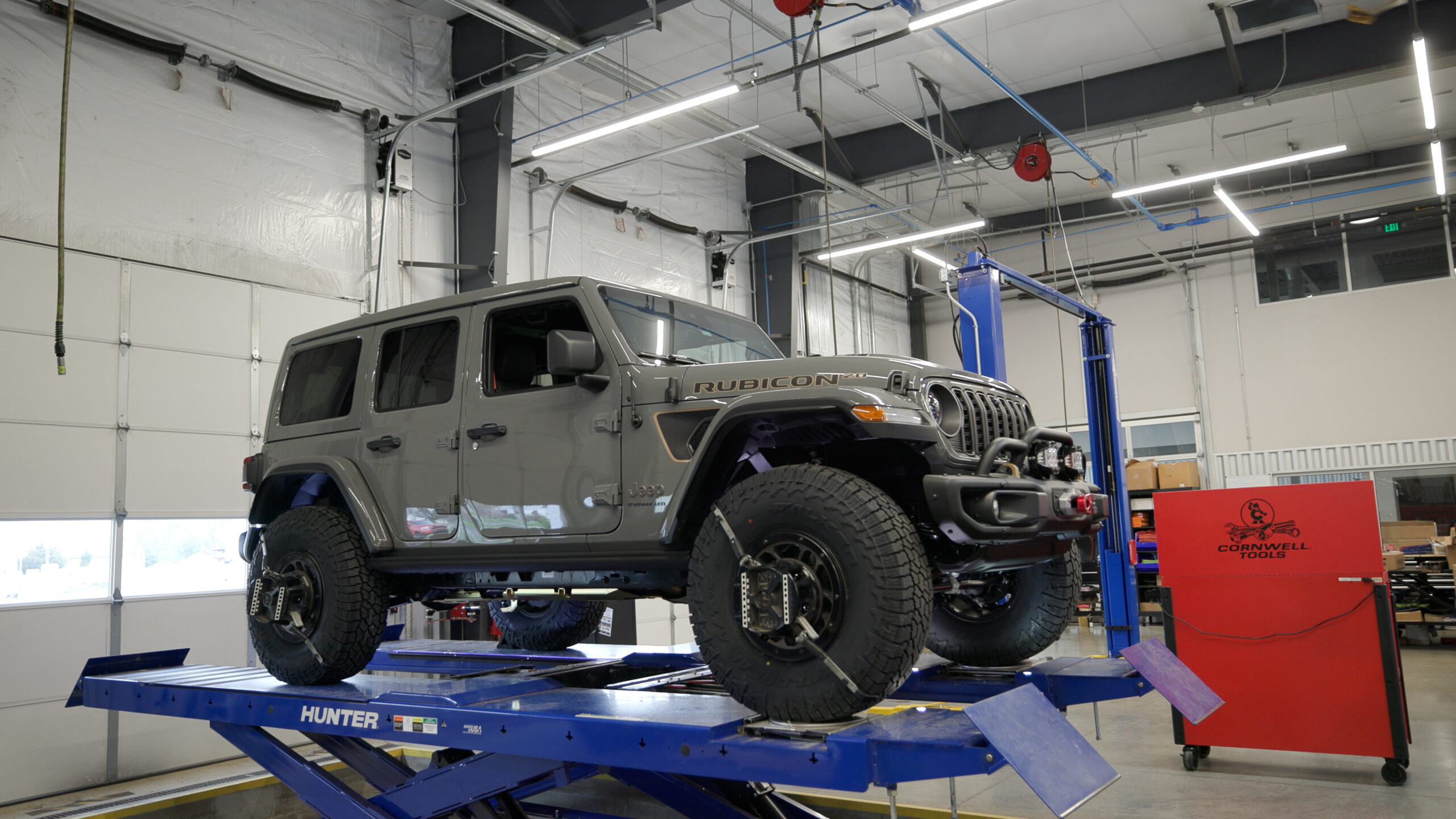In the realm of off-roading and rugged adventures, the allure of a lifted 4×4 vehicle is undeniable. These towering beasts with their enhanced ground clearance and imposing presence are symbols of freedom and exploration. However, amidst the excitement of conquering trails and navigating through challenging terrains, one crucial aspect often gets overlooked – wheel alignment. In this blog post, we delve into why alignments are essential for lifted 4×4 vehicles, exploring the benefits they offer and the potential consequences of neglecting them.

- Preserving Tire Health: Aligned wheels ensure even tire wear, maximizing the lifespan of your tires. In a lifted 4×4 vehicle, the larger and more aggressive tires are not only expensive but also vital for maintaining traction in demanding off-road conditions. Misaligned wheels can cause uneven wear patterns, leading to premature tire deterioration and the need for frequent replacements, which can be costly and inconvenient, especially during expeditions far from civilization.
- Enhancing Stability and Handling: Proper wheel alignment contributes to the stability and handling characteristics of a vehicle, crucial factors for off-roading safety. Lifted 4×4 vehicles have a higher center of gravity, making them more prone to body roll and instability, particularly during sharp turns or sudden maneuvers. Alignments ensure that all four wheels are precisely positioned, optimizing contact with the ground and enhancing stability, thereby reducing the risk of rollovers and improving overall handling performance on and off the road.
- Maximizing Fuel Efficiency: While fuel efficiency may not be the primary concern for off-road enthusiasts, it remains a practical consideration, especially for extended adventures where fuel stops are few and far between. Misaligned wheels can introduce unnecessary drag and resistance, forcing the engine to work harder and consume more fuel to maintain speed. By ensuring proper alignment, you can minimize rolling resistance, allowing your vehicle to operate more efficiently and conserve fuel, extending your range and reducing the frequency of refueling stops.
- Preserving Suspension Components: A lifted 4×4 vehicle undergoes significant modifications to accommodate larger tires and increased ground clearance. However, these modifications can place additional strain on suspension components, such as control arms, ball joints, and tie rods. Misaligned wheels exacerbate this strain, causing premature wear and potentially compromising the integrity of the suspension system. Regular alignments help distribute the load evenly across the suspension components, reducing stress and extending their longevity, thus minimizing the risk of mechanical failures and costly repairs.
- Ensuring Safety: Above all, proper wheel alignment is essential for ensuring the safety of both the vehicle occupants and other road users. Off-roading presents inherent risks, and any compromise in vehicle stability or control can have serious consequences. By investing in regular alignments, you are proactively addressing potential safety hazards, reducing the likelihood of accidents or breakdowns, and providing yourself with peace of mind during your off-road adventures.
In the world of lifted 4×4 vehicles, where rugged terrain and challenging obstacles are the norm, wheel alignment emerges as a fundamental aspect of vehicle maintenance and performance. From preserving tire health to enhancing stability and safety, the benefits of alignments are undeniable. By prioritizing regular alignments, off-road enthusiasts can ensure that their vehicles remain in optimal condition, ready to tackle any adventure with confidence and reliability. After all, in the realm of off-roading, where every journey is an exploration into the unknown, a properly aligned vehicle is your steadfast companion, guiding you through the toughest of trails with ease and precision.